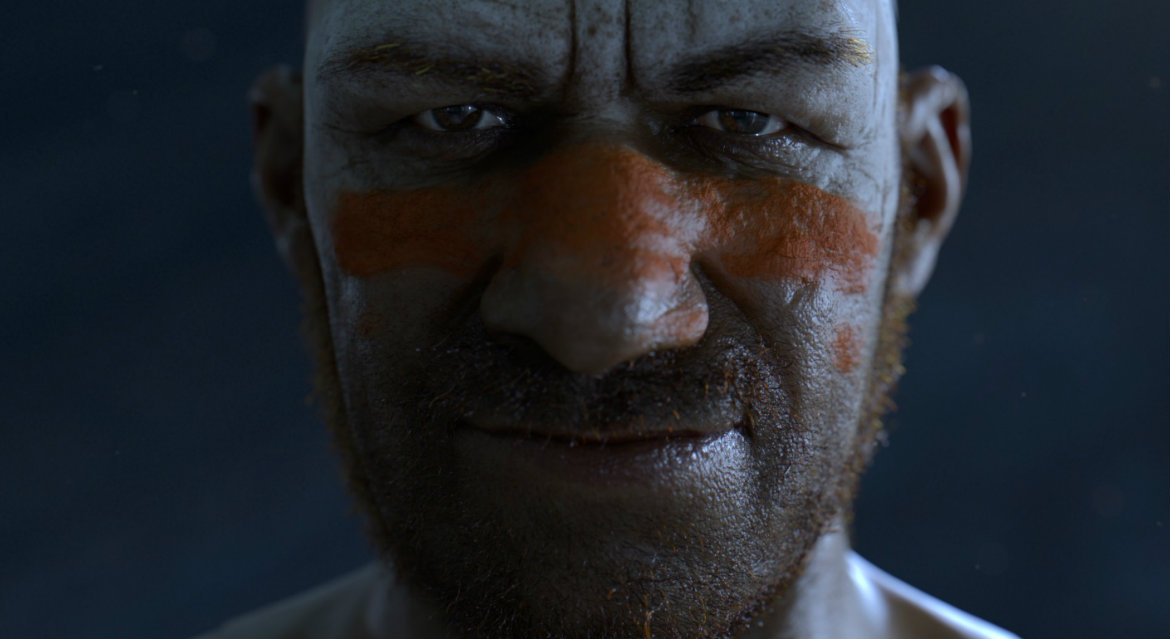Neanderthal brought back to life with help from Dundee expert
Published On Fri 11 May 2018 by Grant Hill

An expert in facial reconstruction from the University of Dundee has helped bring Neanderthals back to life for a major new BBC series, which begins this weekend.
Dr Christopher Rynn, from the University’s Centre for Anatomy and Human Identification, will feature in Neanderthals: Meet Your Ancestors alongside Hollywood star Andy Serkis, co-founder of digital performance-capture studio The Imaginarium, when the two-part production premieres on BBC2 on Sunday 13 May.
The show is presented by Ella Al-Shamahi, a rising star in the field of Neanderthal research who takes a fossil Neanderthal skull found in Iraq to Dr Rynn for his expert evaluation. He was able to reconstruct the face using clues from the bone structure of the Neanderthal, known as Ned, allowing us to admire the face of one of our ancestors – one that hasn't been seen for more than 50,000 years.
A team of scientists then began the laborious process of working out what Ned's body was like, building up layers from the fossil skeleton to create a digital Neanderthal. This being completed, the same type of motion capture technology that helped Serkis star as Gollum in Lord of the Rings and Caesar in Planet of the Apes was used to create the first scientifically accurate, 3D working avatar of a Neanderthal.
With the help of cutting-edge CGI technology, the show’s producers were able to reconstruct a Neanderthal hunt, model their voices 40,000 years after they died out and – to see how well Neanderthals would blend in to modern society – put Ned amongst commuters on a busy tube.
“Having reconstructed Ned’s face, I am as excited as anyone to see how he looks in the final show and to see what the producers have done with him,” said Dr Rynn. “I have been bursting to tell people about this since the filming took place almost a year ago but was sworn to secrecy so I’m relieved I can finally talk about the show.
“I was working from a plastic cast of Ned’s skull, which tells a story in itself. Ned was in his 30s when he died, but the skull shows he had received a severe head injury when he was in his teens. The severity and location of the injury means he would likely have been blind and deaf on the left side, while the withered nature of the right side of his skeleton means he would have been quite severely disabled.
“Despite this, he lived for another 20 years after his injury and was found with other members of his family. He would have been unable to care for himself so this provided the first evidence that Neanderthals looked after each other.”
Neanderthals corrects many myths about our much-maligned ancestors. According to recent scientific research, the Neanderthals are not the knuckle-dragging apemen of popular imagination and around 2% of most people’s DNA is of Neanderthal origin.
While Neanderthals were smaller than modern humans they were also much stronger and faster, abilities that were used to ambush and bring down vast animals like woolly mammoths. New archaeological research is also revealing intriguing details about Neanderthals mental capacities through evidence of Neanderthal art and their penchant for dressing in vulture feathers.
Neanderthals: Meet Your Ancestors airs on BBC2 at 8pm on Sunday 13 May. The second part will be shown at the same time on Sunday 20 May.
For media enquiries contact:
Grant Hill
Press Officer
University of Dundee
Nethergate, Dundee, DD1 4HN
Tel: +44 (0)1382 384768
Mobile: 07854 953277
Email: g.hill@dundee.ac.uk